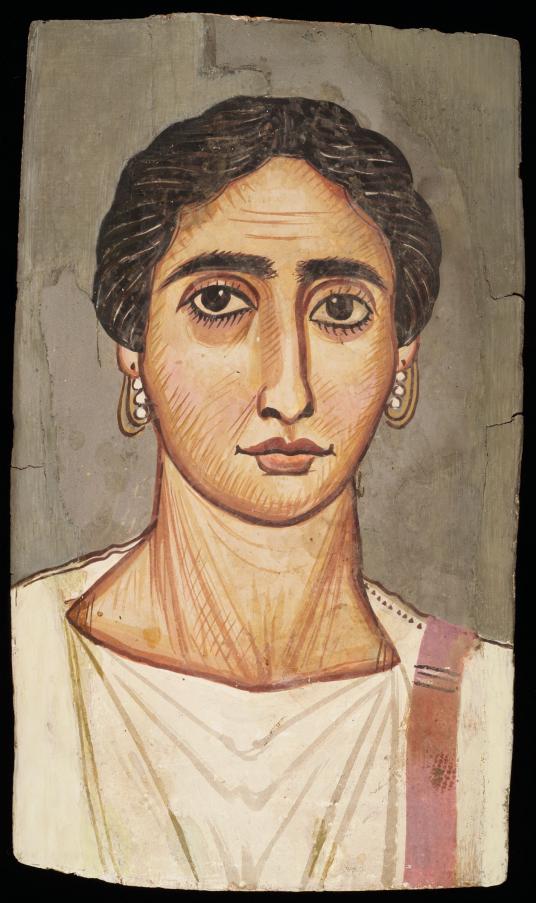“Mummy Portraits” of Roman Egypt: Status, Ethnicity, and Magic

Special Event
Online and In-PersonGeological Lecture Hall
24 Oxford Street, Cambridge, MA
This event was recorded. Please view the talk on The Harvard Museum of the Ancient Near East’s Youtube channel.
In ancient Egypt, one of the final steps in the mummification process was to equip the body with a permanent face covering that helped protect the head and also ritually transform the deceased into a god. The earliest examples of these were stylized masks, later replaced by more realistically rendered painted portraits. Using evidence from the archaeological record and the Book of the Dead—a series of spells meant to guide the dead as they sought eternal life—art professor Lorelei Corcoran will discuss the production and function of the “mummy portraits” that were popular throughout Egypt in the Roman period. She’ll also explore what these images reveal about the religious beliefs and multilayered ethnicities of their subjects.
This hybrid event will be held in person and online. The event will be held at the Geological Lecture Hall, 24 Oxford Street, in Cambridge. Free parking is available in the 52 Oxford Street Garage.
This event is free, but advance registration required for either virtual or in-person attendance. A Zoom link will be shared upon registration for those opting to join virtually.
Presented by the Harvard Museum of the Ancient Near East and the Harvard Museums of Science & Culture in collaboration with the Harvard Art Museums. The related Harvard Art Museums exhibition, Funerary Portraits from Roman Egypt: Facing Forward, is on view through December 30, 2022.
About the speaker:
Lorelei H. Corcoran is professor of art history (Egyptian art and archaeology) and director of the Institute of Egyptian Art & Archaeology at the University of Memphis, in Tennessee. She earned a B.A. in Classical studies at Tufts University and a Ph.D. in Near Eastern languages and civilizations (Egyptology) at the University of Chicago. Her publications include Herakleides: A Portrait Mummy from Roman Egypt (with Marie Svoboda; J. Paul Getty Museum, 2010) and Portrait Mummies from Roman Egypt (I–IV Centuries AD) with a Catalog of Portrait Mummies in Egyptian Museums (University of Chicago Press, 1995), as well as contributions to the multidisciplinary studies Dress in Mediterranean Antiquity: Greeks, Romans, Jews, Christians (Bloomsbury Publishing, 2021) and Portrait of a Child: Historical and Scientific Studies of a Roman Egyptian Mummy (Block Museum of Art, 2019).
Professor Corcoran’s research interests have focused on the funerary traditions of Ptolemaic and Roman Egypt but also include the complementarity of text and image as well as the role of color in Egyptian art. In 2016, she published the results of her identification of the earliest use of the manmade pigment Egyptian blue on a predynastic bowl in the collection of the Museum of Fine Arts, Boston (“The Color Blue as an Animator in Ancient Egyptian Art,” in Global Color History: Interpreting the Ancient Spectrum [Gorgias Press, 2016]). Her work in museums has taken her around the globe, and her fieldwork experience in Egypt includes participation as a staff member for the University of Chicago’s Epigraphic Survey and the University of Memphis excavation of KV-63 in Luxor, Egypt. She has been invited to lecture at, among other institutions, the Metropolitan Museum of Art, the University of Chicago, Brown University, the Art Institute of Chicago, and the British Museum and has been interviewed by The New York Times, the BBC, and NPR.